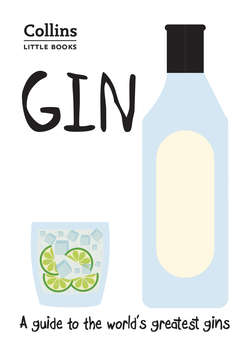Читать книгу Gin: A guide to the world’s greatest gins - Dominic Roskrow - Страница 5
ОглавлениеIn one form or other gin has been with us for more than 600 years. It has been subject to wild swings of fortune, to gigantic ebbs and flows in popularity, and been courted and rejected by prince and pauper alike. In its many guises it has served as a medicine to the affluent, a tonic to the troops, and an elixir to the wretched rabble that populated the violent streets of London. Today it is enjoying a worldwide revival and has achieved a status as the very epitome of quality craft distilling.
Gin’s roots lie in Europe, quite possibly in Italy but most definitely in the Netherlands, where it was distilled for medicine, and juniper was first used to hide the taste of the naked spirit. It was given to British troops fighting in the Thirty Years War – Dutch courage – and it may be that returning troops brought it back, increasing its popularity, though a limited amount of distillation had already started in England by this time.
The better made ‘Dutch’ version of the spirit was enjoyed by the aristocracy, and a poorer, cheaper spirit became popular with the poor. When Dutch King William of Orange ascended the throne, he encouraged distillation and there may have been some patriotic consumption too. By 1730 there were more than 7000 shops in London selling nothing but spirits.
But gin had started to become a problem. Attempts to restrict widespread drunkenness and violence by making gin prohibitively expensive backfired spectacularly, prompting rioting and a surge in illicit distilling. Few official licences were taken out, but production in London reached a staggering 11,000,000 gallons.
By this time further licensing reforms meant that beer shops had sprung up across the country. To compete, gin distillers opened large gin palaces – imposing and relatively stylish places. But gin was about to undergo another sea change. The invention of the column still meant that the quality of gin in general rose, and a specific style of gin came into existence: London Dry Gin.
Gin became popular with the middle classes, and when the Empire spread out to India, its transformation was completed when it was discovered that quinine was a deterrent to malaria-carrying mosquitoes – and the perfect way to hide its bitter taste was to mix it with carbonated water and add it to gin, creating the gin and tonic.
By the twentieth century, though, it seemed gin’s best days were behind it. The spirit faced a two-pronged identity crisis. On the one hand, its debauched and negative reputation proved remarkably enduring – ‘gin-soaked’ and ‘mother’s ruin’ are not extinct even now. And on the other, the gin and tonic gained a reputation associated with the worse type of Englishman – and it did tend to be men – those associated with the closed-shop world of the golf club and sports bar, and the pre-drinks ritual when dining out.
Gin’s fortunes were revived in the 1970s, when cocktails became popular and drinks makers discovered recipes where gin was a key ingredient. Perhaps, then, we shouldn’t have been surprised by the surge in popularity in gin when a new generation of bartenders – now calling themselves mixologists – turned to provenance and history to create creative and exciting new cocktails. Nonetheless, today’s gin boom is unprecedented. A perfect wave of a thriving cocktail culture, a desire to drink less but better, a trend towards heritage and authenticity, and a worldwide passion for micro and craft distilling has meant the emergence of hundreds of new gins.
No book could hope to cover them all, nor reflect the surge of renewed interest in flavoured gins, aged gins, innovative new drinks based loosely on gin, and close relatives such as genevers, and this book doesn’t even attempt to do so. To put it into some context, one major online retailer lists nearly 450 gins. That’s just the tip of the iceberg. The number of new producers is growing by the week. It seems that every town, city, and even village is producing its own gin, and not just in England, either. Indeed, most British gin is produced in Scotland.
The loose definitions of what constitutes gin means that long-standing controversies as to the importance of juniper to a gin’s taste and the way it is distilled continue unabated. Some of the experimentation and innovation in the category mean that, effectively, new drinks categories are being invented.
But, whatever else, the craft revolution means that gin has shaken off its snooty middle-class English image, and is enjoying a surge of popularity among drinkers seeking quality and well-made drinks.
This book is meant to be an introduction to the gin category. We have selected one hundred gins, covering the best-known names and a selection of the best of the new wave of gin makers. We have concentrated mainly on traditional gins.
So what exactly is gin?
